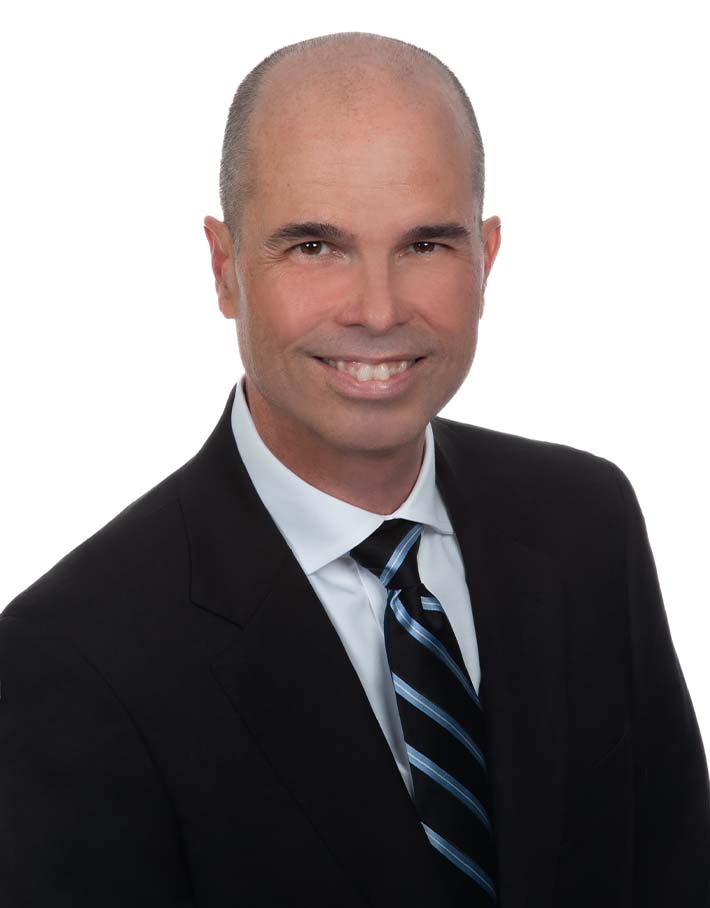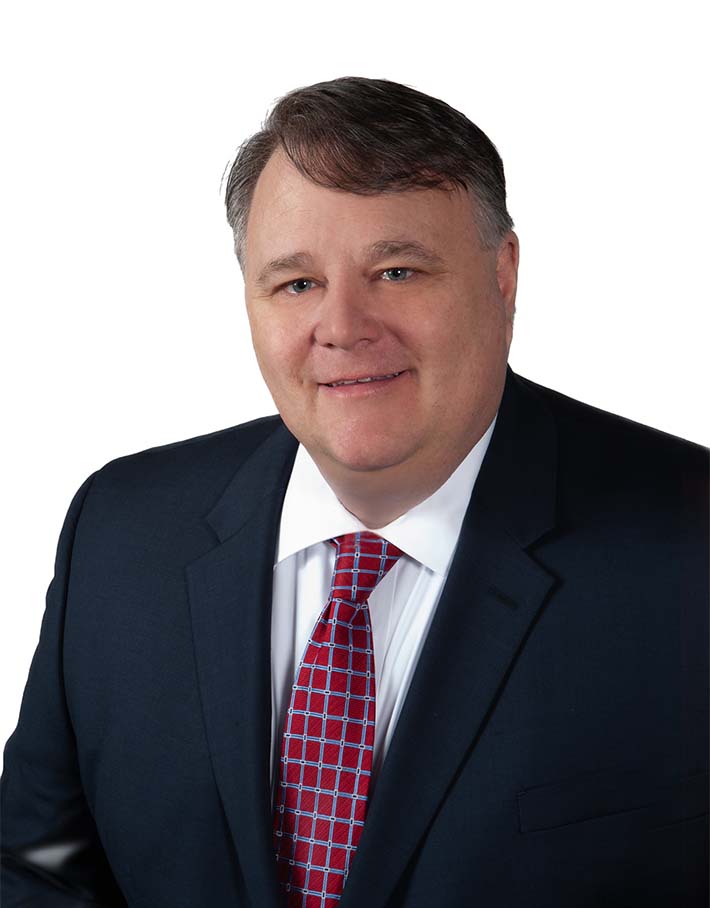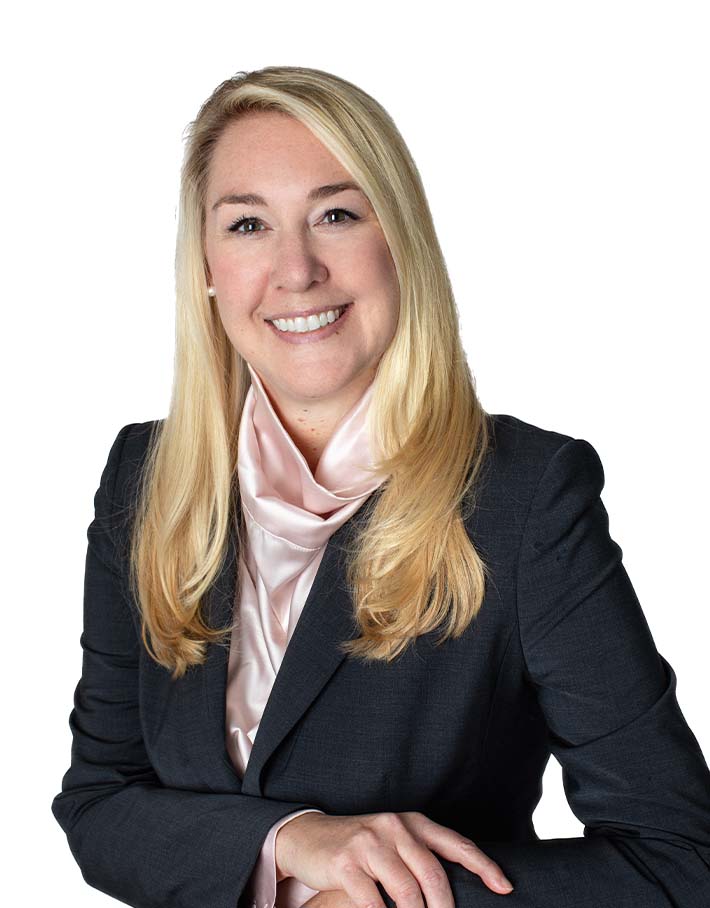Starting Your RIA – The Registration Process
By Buddy Doyle, Sarah Sutton and Jay Donlin
Subscribe to our original industry insights
Learn how and when to start your own Investment Advisor Firm. Experts Buddy Doyle, Sarah Sutton and Jay Donlin discuss licensing, what you need, registering with the SEC and choosing a custodian.
Transcript
Transcript provided by Temi transcript services
Libby Hall: Hi, and welcome to today’s podcast on when and how to register your investment advisor, part of our series focusing on starting your RIA. I’m Libby Hall, and with me are Oyster CEO, Buddy Doyle and consultants Sarah Sutton and Jay Donlin. Today, we’re going to be talking about licensing, what you need, timing, registering with the SEC, and choosing a custodian. Buddy, why don’t you take it from here?
Buddy Doyle: Thanks Libby. Today, we’re going to talk a little bit about how you would start to your RIA and when you might want to consider starting your RIA. So, welcome back, Sarah. Welcome back, Jay. We’re glad to have you here to participate in our podcast. Sarah, maybe you can start us off and talk a little bit about the licensing requirements themselves to get started as a registered investment advisor.
Sarah Sutton: Sure. Thanks Buddy. So generally, the states and the SEC are going to look for registered investment advisors to have their series 65, or 66, on the RIA side of the world. There are some additional licenses, but they’re not normally held when you’re on the RIA side of the business. Some states also will allow you to be grandfathered in, if you hold your CFA, CFP. I don’t know what the other ones are, so I’m going to stick with those. So, it’s a good opportunity to see what state you are in and where you’re looking to be registered, and what states your clients would potentially be in as well, to see if there are some additional ways for you to become registered, without having to go through the actual licensing process.
Buddy Doyle: Yeah, and I thank Sarah, you bring up a good point with the fact that your state-by-state registrations and they all have their own laws that they apply. There’s a framework for that, but each state legislature gets to make their own decisions about what, they do to protect the investors and their state. So that’ll be an important opponent, we’re going to keep talking about registering with the SEC, but that is a process that happens when you have a hundred million or more in assets. If you’re starting an RIA with, less than a hundred million in assets, or you don’t expect to achieve a hundred million in assets quickly, you’ll do a state registered RIA where the SEC will not be the ones examining you. But when you do start a SEC federally registered RIA, you very well may see a state regulator come into look at your office. So, number one is you’ve either got to be registered or you’ve got to have one of these exemptions based off your certifications and experience. And again, each state’s a little different, but we can certainly help you look up. And we see a lot of states, that we work with. So, anybody you’re working with ought to be able to help you with that. What about other things that investment advisors need to do to get going?
Sarah Sutton: Sure. So initially, licensing is in the registration piece we’ll need to be in place. But it takes around 90 days to go through the process of developing your compliance program and getting the necessary filing requirements completed in order to be filed with the SEC. And once you file with the SEC, they have 30 days from the date that you submit your filing, to respond and give you approval or ask for additional information.
Buddy Doyle: Yeah. And I think there’s a bit of a rigmarole around that, there is for everything, right? So, when you’ve made that decision to start an RIA. To do that, registration requires paperwork to get an access to the portal to do that registration. And that takes a little bit of time to get going. The other thing that really takes time, Sarah mentioned the SEC has 30 days to respond to your application, but there’s a few things that go into that application. You’ll need to work through your Form ADV 1, which is a check the box kind of question, and answer things that will ask you about a lot of different things about your business, a very long form. But you can read through that all the forms that are publicly to disclosed, and you can find those on the SEC’s website.
Buddy Doyle: Then there’s the ADV 2 that talks about how you do your business in a narrative format. Plain English is what they’re looking for there. And then there’s a 2B that would describe you and the other investment is representatives, which is what we call registered folks in RIA. That would describe a little bit about that background, whether there’s been any mix or scrapes on the CRD. What the educational experience is for folks, whether they’ve had any, other challenges. And it’s really designed to help the, the retail investor look at who they’re dealing with and understand a little bit more about their qualifications and if there’s any risks there. But, Jay, one of the things that I found in building out these ADV 2s, and the things that get you in trouble with the regulators is that your disclosure doesn’t match how you do business. And you’re a business guy and you’ve gone through this, more than a couple of times, I always wonder as a person sending out the ADV two to folks and saying, hey, look at this and make sure this is right. You try to coach folks through what to look at, but what do you look at when you see these ADV 2s.
Jay Donlin: So yeah, Buddy, you’re exactly right. Then when the regulators come in and do an audit, that’s the first thing they’re looking at is your ADVs, all the different versions, and are you doing what you say you’re doing? And what’s interesting is, when I was in the actual business world, the business side, every year you reviewed it, and every year you found something different, you were always amending it, you were always changing, tweaking. You changed ADV from products, you change different pricing, structure, there was always some sort of change. So, it’s important that, you get it right because they’re going to hold you to it. They’re going to say, hey, are you really doing this? Is this really your pricing structure?
Jay Donlin: It also defines your conflicts, Buddy. If you have any potential conflicts, they’re in there. And so, you have to keep up with that, because they’re going to look at that. They’re going to look at your conflicts. They’re going to see if they can find any other conflicts and, they’re there. And so, it’s important that, you are not just one person in the firm, but kind of the executive manager themselves team and compliance. And if you have external consultants, you’re working through them to ensure that it’s accurate, because they’re going to find if it’s not.
Buddy Doyle: Yeah. And sometimes they’ll find it’s not when it is. And, and so you’re already have to walk through this, examiners, walk in the door, they don’t know you, they, know what they’ve seen around the industry. They know what they hear in terms of horror stories for investors. And so, they’re going to come in a little bit skeptical about what you’ve put in place, which is, their job, it’s what it attracts ‘ them, but I think that getting into the details. Is so important to protecting your firm as you move forward, be skeptical as well of what your consultants are doing. If you’re using consultants, what your compliance department is doing. If, you have people internally because, they don’t sit with you in trade Securities. If you’re a trader, they just describe how you trade securities in as much detail as they can, but you own it.
Buddy Doyle: You need to be a participant in how we describe it. So, I think that’s important, and that goes into all these things having to match up as you’re getting your business put together. You’re getting your plans put together and looking at how you’re going to run portfolios. Some of the other things you’ll be doing during this time is putting together your agreements themselves with your clients <affirmative>, and those agreements themselves actually need to match up to your disclosures as well. If your agreements themselves say one thing, your disclosures say something different, you’re getting clients signing up for products and services that you haven’t described and your disclosures that can be troubling. Sarah, any thoughts on client agreements themselves and things that, firms ought to consider when they’re doing client agreements themselves?
Sarah Sutton: Well, being that it’s, truly kind of a reflection on, the type of business that you are doing and, the services that you’re offering to clients. So, going through all the, regulatory forms and documents and filings that we have to go to, like you mentioned, it’s directly reflected in the agreements themselves that the clients review see sign, and that you abide by during your relationship with the client. So in kind of going through that, you have to be specific enough that you’re listing the, the service offerings and , what you’re going to be doing for the client, thinking about discretion, non-discretion, the difference between the two, do you feel comfortable having discretion, if not go with the non-discretionary around out, there’s a lot of discussion right now about wrap accounts versus not having wrap accounts.
Sarah Sutton: So, that also needs to be incorporated into the agreements themselves. Maybe you have, both types, depending on, the needs of the client, but again, everything that’s in your filings needs to match which in your agreements themselves and it has to match at what you’re doing for the client. So that’s one of the things that’s really important. So, you must be general thorough and, also follow through and, abide by the agreements themselves, that you have with a client. One of the things that we’ve noticed is when our clients do go through a regulatory audit with the SEC, that’s one of the things that they look for is consistency. And, when they find one thing that’s not consistent, they kind of go down the rabbit hole to look for other things. So, we try to make sure at the very beginning that our clients are set up for, to make sure that everything is listed.
Jay Donlin: Yeah, Buddy, Sarah mentioned discretionary versus non-discretionary. And one of the things that I would, coach, people to do, is it, you may be uncomfortable being full discretion on an account, but it’s okay to get full discretion, right. And not use it. You can, you can still have a discretionary account where you manage it. Non-discretionary where you’re calling your clients going through, recommendations, taking orders, the, tradition of the quote, the traditional way non-discretionary, even though you still have discretion. So if you’re uncomfortable with discretion, of course, you can always make it non-discretionary. But if you just want to have it in the case of an emergency, the market completely falls apart and you can’t get ahold of everybody and you need to sell, it’s good to have it and just not use it, , we have several clients that do that, they have full discretion that can act if necessary, but still enjoy talking with the clients, going through strategy, that sort of thing.
Sarah Sutton: Jay, you bring up a good point regarding, the market fluctuation and changes. And when an advisor is, kind of developing out there, the structure of their business model, and they’re looking at how they’re going to manage, the investments for the client and the asset allocation, if they have specific models that they are working with, that their clients are in, considering the discretion, non-discretion, it’s also a good point to speak to the custodian and what they have to offer from, the trading perspective with block trading, the ease of making changes, if you’re changing it and asset allocation in a specific model, is it something you can do within a sleeve on the custodians trading platform, or is it going to have to be a more complicated process? So that’s just kind of one thing to keep in mind, we’ve heard a lot of client’s struggles, again, they’re trying to do everything else. They may not have the, the staff that they’re used to, or a trading department like they had before, with their previous firm and this kind of alleviates any stress, especially starting out, you’ve got a lot of other things going on. It’s just something to consider.
Buddy Doyle: Yeah. And I think it’s a choice, right? And you have choices when you start your own RIA, and you can actually choose both paths. The key is when you make these choices, you’ve got to have pretty good documentation about why you chose one path versus another with your or particular clients. So, Sarah mentioned wrap fee programs and non-wrap programs, a wrap fee, if you’re, you’re not familiar with it is where, the advisor pays a number of transaction charges and things like that, in a on wrap would get passed through to the client in terms of some ticket charges and things. And as, as ticket charges have dropped, how you describe the value of a wrap program, needs to continue to evolve, and you need to make sure you’re not describing benefits that clients don’t receive.
Buddy Doyle: And of course, custodians have, charging on some assets, not others. It’s just created a complication for, a registered investment advisor, but again, and it’s matching your disclosures and your filings to the way you do business. It’s describing those accurately in those agreements themselves that you’re putting together, as well as your compliance program. The things that you’re required to do as an investment advisor is to have a code of ethics and have a compliance program, and to have policy, and procedures that you follow, that are reasonably designed, whatever reasonable means at the time, to comply with rules and regulations. And so, one of the things I like to do when we’re going through and helping clients get established is to encourage them when, we’re going through this process, that at a certain point, when you’ve got an agreement together is to get an outside counsel to maybe look at this and make sure that it’s meeting the legal standards that you update.
Buddy Doyle: I have found attorneys that are more than happy for a fee to review your agreements themselves, and then, and to opine on them. And then if regulators, take issue with your agreements themselves, I found they’re happy for an additional fee, to help defend you. But I think it is still good to get that set of eyes on there. And I tend to use, attorneys when, we’re developing agreements themselves and working through those things. They are professionals, and I tend to lean on the professionals for advice there. So I would encourage you. I know it’s an expense. I know you need another expense as a startup, like a hole in the head, consider it an investment that will probably, pay off in the end of it, if a regulator really does dig in on some things, having a good council review, your agreement document shows that you are diligent and that you are, taking this stuff seriously. Any advice, Sarah, on code of ethics, policy manuals, procedure manuals, things to consider that you don’t, you may not, think about when you’re, getting going.
Sarah Sutton: So, the advice that I would give is so Oyster does a great job of, we can kind of start out with the base template and then build it out and customize it for your firm. Some tend to be a little overzealous and think that they need to include a whole lot more than they need to. Again, it’s really, based on your firm, it’s customized to your firm. It needs to reflect again, the service offerings that you’re providing to the clients, the products that you’re offering, when looking at the types of products that your clients will be investing in, or that you’re going to be reckon amending to your clients to invest in that will need to be reflected in your compliance manual. So, it’s going to your suitability, the disclosures that you have to make in general, we want it, your compliance manual is going to need to cover basically the activity of what you and your firm will be doing on a day-to-day basis.
Buddy Doyle: Yeah. And then also coming out of that is a form CRS, your relationship disclosure to your clients as well. And again, all these things have to match up. So, what I found is, it’s important to not, get aspirational policies and procedures. Again, remember you have to follow these things. So be practical when you’re going through this, it is not a manual written by lawyers for regulators. It really should describe what you do, how you do it, and be designed to keep you on track. It’s on as an instruction manual. If you really do it right, and at least in my opinion, right and wrong, is debatable sometimes. But I do think you want to want to do, a good job. And then once you launch everything changes, right? So, you need to make sure you come back this on a routine basis, you’re required to come back to it on an annual basis and do a, a review, pretty much a cover-to-cover review of your policies to make sure they’re still aligned with rules and regulations and how you do business but do that early.
Buddy Doyle: Because again, there’s no time to avoid trouble, like at the, any Jay, any other thoughts on sort of, again, I, I love talking to ops folks and, and business executives about compliance manuals, because I think you, you are the ones that keep ‘ them good. We describe risk. We describe regulations, we give guidance, but you’re, you’re doing what you do. And again, we try to get both those things matched up. Yeah.
Jay Donlin: Buddy, you talked about it earlier. It’s important that the business side and the operations side collaborate with compliance, because compliance can think for, you’re doing something a certain way and you’re not, we’ve, we’ve had situations where, and you described it on the, on the trading side where it’s no, we don’t, we don’t do it that way. , <laugh> so, and, but it’s in the manual and the regulators are going to say, well, why do you say you do it that way? And you, you’re not doing it that way. So, it’s important that there’s a collaboration within the firm that the business side and the op side are taking a critical look at the procedures and any other disclosures, to make sure that everybody’s singing all the same sheet of music.
Buddy Doyle: So good stuff there. Thank you. what about time? We’ve coached a number of advisors through, through breakaway or things like that to get started. And a lot of times you hear the time of year is, either an obstacle or a benefit., is there anything that you’ve seen to the time of year of starting your firm and not starting your firm? Jay, maybe you can weigh in on
Jay Donlin: Thanks. Yeah, people traditionally like to avoid tax season, you don’t want to be, rolling out the door of your, of your firm, during tax season, when your clients need you the most. That’s, that’s one of the good things, to, to keep in mind, there’s always tough because then you can’t get ahold of the clients, to transition ‘ them over. And then the holidays are, are pretty rough too, because everybody’s distracted and doesn’t want to do paperwork over the holidays. So, it them like, okay, there’s a couple quarters, right. That you might be able to work in and, and get some things done. First of the year, everybody likes to start off fresh into new year, that’s always a good time, and then kind of that late reminders, before the holidays, late s MER fall, that’s probably the good time, but you just need to think about your clients, think about, you interact with ‘ them every day. Anyway, when they’re going on vacation, when they’re taking time off traditionally or, or don’t want to deal with certain things, and those are the things that, can just lessen your frustrations and lessen you lessen, your client’s frustrations. If you’re choosing to transition during one of those kinds of, I’ll call ‘ them optimal periods. So
Buddy Doyle: Sarah, have you seen anything to the Thai of, of impacting the decision-making process or the success of an organization?
Sarah Sutton: Yeah, I totally agree with everything that Jay said. It really is. It’s a very personal date. <laugh>, there are a lot of factors to consider and weigh in, and I think it, it’s a really important decision because it, I don’t want to say it can make or break a transition, but it can lessen your stress level if you really time it. Well, one of the other things that clients should consider is, the timing, if they’re in the business already and they’re with a firm currently looking at, their advisory business, when their payout is going to be actually made, are they getting paid in arrears? Are they getting paid in advance? Those types of things, just looking at the actual day, month, or quarter you do decide to flip the switch and, make the move you, there are some, compensation pieces there that you don’t want to miss out on. And some firms would hold funds that you may have gotten if you stayed a few days later. So really look at your agreements themselves with your current firm, look at the timing of the month and the days in which your current firm is basing your production on because each firm is different and, then just make the best decision. And, when you do make it, you got to stick with it.
Buddy Doyle: I think that’s right. And I think the one thing I’ll give advice on timing is, start before your timing start months before your timing for your transition. Because again, there is the planning, there is the going through this registration process with the brining a little bit of an effort. It does take, some time to get it done and you also need to come to agreements themselves with all kinds of vendors and custodians and things like that to achieve your goals. So, what I have found is that we’ve launched a probably a good number of RIAs, I can’t think of a month, we haven’t. But there are different considerations of your up your timing, your client’s timing, the message, if you want to get started in January, the first day of January to try to cut, 1099s off on one firm and go to the other, it’s not really going to work because you’re not going to get all those assets moved over on the first day.
Buddy Doyle: There will be transactions going on. So just think through all that practically where you want to be, there’s hardly a good time that you look at to do this. And a lot of times, you’re, planning and you’re moving forward, but sometimes you just get this episodic thing that happens at your firm, and you’ve just had enough and you’re ready to, move forward just realize when you’re ready to move forward. There are a few months in front of you, speaking of custodians, that is the other big component that we have a lot of conversations with clients about is, which custodians are good, which custodians are bad. And what we have found, at least I’ve found that custodians are custodians, and they operate how they operate, that fits good for you, or that may be, not the best fit for you. But Jay, can you talk a little bit about the custodians and kind of what they offer and what some of those considerations are?
Jay Donlin: Yeah, Buddy, first you have to decide kind of what model do you want to use? I mean, there’s kind of, I’ll call ‘ them middlemen, turnkey asset management programs that you can leverage. A lot of ‘ them will have their own kind of middle office, in front of the custodian, or custodians, they may, have offer multiple custodian options through that program. So, you have to decide, do you want to use that model or do you want to go direct to a custodian. And the large custodians out there, they’re all pretty much the same. It’s, who you get comfortable with after you talk to the people, pricing is very similar across all the custodians. Now technology is similar across all the custodians now. So, it’s just a matter of personal preference, how you want to, kind of engage with those custodians.
Jay Donlin: One thing that I will say we were talking about transitions, a lot of these custodians have gotten pretty good at transition. So, if you go direct, and even the turnkey asset management programs as well, they have, streamlined as much as possible, these transitions through use of these S or, overnighting packages, if you need to overnight packages to your clients, that sort of thing. And so, it’s important to kind of have that on your checklist, when you’re looking at a custodian, how much support do I get, of course, based on the size of your firm, it’ll generally govern the level of support you’ll get on transition and other things. So it’s important to ask those type of questions. Hey, will you, help me with these things? We talked a little bit about, products and services and building out your ADV. A lot of these, will provide you if you’re going to utilize their products. As part of what they’ll give you all the language, for your ADV, because you’re going to leverage their products. They already have that kind of canned built. and they’ll share it with you. So those are the kind of things, when you’re looking at custodians or these turnkey asset management programs that you just want to ask the questions, want to see how they’re going to support you and pick who you’re comfortable with.
Buddy Doyle: Yeah. I think that’s right. I think it’s a lot that conversation. It’s a lot of getting comfort and it’s also being somewhat skeptical of maybe what you’re hearing when you’re, being told what the advantages are of coming to, a particular platform. I think TAs offer a great service to firms that, prefer to leverage the use of a tamp rather than doing it to themselves and picking their own technology or their hiring traders and things like that. The benefit of getting some, a jump start on disclosures can be good, although I’ve never seen someone who just starts that, if you get fined, they’re not volunteering to pay that for you, necessarily. So, but it is a helpful thing. The other thing that, we’ve seen happening a lot is, firms, if you’re an independent rep, and even in some cases, if you’re a W2 with, another organization, you can start your own RIA without, moving custodians, right?
Buddy Doyle: They’ll, do custody for you. So there’s a lot of options out there available. And it, really is selecting the, the best fit for you looking for that Goldilocks organization and talking to experts who, are independent of the custodian can be helpful. Whether that’s advisors that are already on the platform, who are great to tell you what they don’t like about the platform. And just realize that’s you’re going to hear a lot of what people don’t like. They lead with that, and then what do they like about the platform usually comes second but get out there and ask a lot of questions. It’s not something you can’t undo, but it’s kind of a pain to move from one custodian to another. It impacts your clients, it impacts their reporting and what they’re familiar with. But what I have found is when you do it, custodians, regardless of which one you select, your clients tend to settle in pretty quickly to, to a new stat document or a new report work or something like that. But you want to design that client experience and you pick the custodian that matches that experience. You’re trying to put together,
Sarah Sutton: Buddy, you bring up an excellent point. One thing that I’ve heard over the years, when advisors are looking to make a change and they are looking at custodians is the client experience. So the advisors to the custodian are the clients. So, if the advisor is, considering several different custodians, what, custodian is offering the best client experience for the advisor? And that’s, usually a very good reflection on the client experience that, investment advisors, clients are going to receive. So, during the transition period, look at the custodians that are going to offer you the most information before you actually flip the switch and have started the RA and are using the custodial platform, do they have available that you can, that you can use during that the few months, or the couple of months, before you actually open up shop, can you look at the documents?
Sarah Sutton: Can you look at the forms? What access do they have? Do they give you kind of some tutorials that are, available to you? Do they have a kind of an internal site lockdown for, for you to review and just get familiar with the firm? So it’s not like starting a brand new job day one, again, it it’s all about managing stress and staying in the right mindset. It’s something, when you, make the move, it’s something that you, personally want to do in most cases. So staying positive and listening to the transition folks at the custodian. That’s another great piece of advice. If they tell you, hey, look, I think it’s going to take three months, take their advice. They’ve done it. They’ve gone through this process several times, they’ve looked at your, or book a business.
Sarah Sutton: They look at what you’re moving or what you want to establish, they’re the experts. So don’t fight it, look at who was going to be working with you. Initially, they will also need to be included in, whatever training that the custodian has available, because you want them to be, up and running. Just as much as you are, because that it makes it a smoother transition and, less stress again on you and your clients. And it helps speed up the process of just getting the assets over and kind of getting, getting from step one of, of opening and getting the assets over to step two with kind of getting into your groove as a new IA.
Buddy Doyle: All right. Well thank you so much, is there anything else you guys want to add? I don’t have anything, Buddy.
Sarah Sutton: I don’t either.
Buddy Doyle: Right. Well, Jay, Sarah, thank you for that informative discussion. Appreciate your time. We’re going to be back with more information for their folks considering starting their RIA. And so, I hope you’ll come back and visit with us again.
Sarah Sutton: Thanks Buddy. Thank you.
Libby Hall: Thanks everyone for listening. Join us for our upcoming podcast and our starting an RIA series. If you’d like to learn more about how Oyster can help you start your own RIA, contact us@oysterllc.com and we’ll be happy to chat if you like what you heard today, follow us on whatever podcast platform you listen to and give us a review, make it easier for people to find us. Thanks and have a great day.





